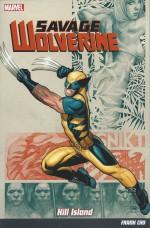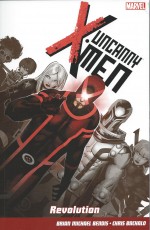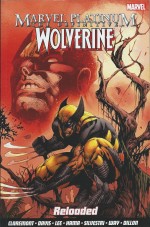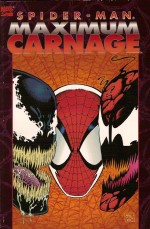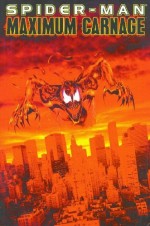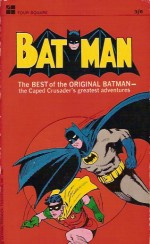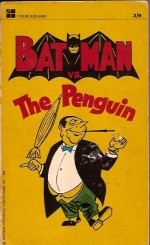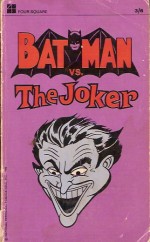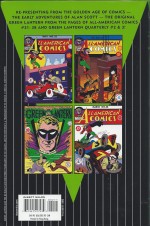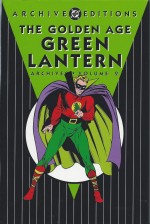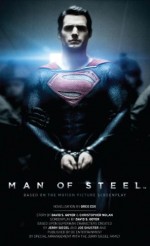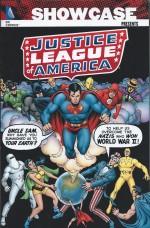
By Len Wein, Gerry Conway, Cary Bates, Elliot S! Maggin, Marty Pasko, Denny O’Neil, Dick Dillin, Frank McLaughlin & various (DC Comics)
ISBN: 978-0-85768-195-9
After the actual invention of the comicbook superhero – for which read the Action Comics debut of Superman in 1938 – the most significant event in the industry’s history was the combination of individual sales-points into a group. Thus what seems blindingly obvious to us with the benefit of four-colour hindsight was proven: a number of popular characters could multiply readership by combining forces. Plus, of course, a mob of superheroes is just so much cooler than one (…or even one-and-a-half if there’s a sidekick in situ…).
The Justice Society of America is rightly revered as a true landmark in the development of comicbooks and when Julius Schwartz revived the superhero genre in the late 1950s, it was inevitable that there would be a new banding together of the latest reconfigured mystery men.
That moment came with The Brave and the Bold #28, a classical adventure title that had recently transformed into a try-out magazine like Showcase. Just before Christmas 1959 the ads began running. “Just Imagine! The mightiest heroes of our time… have banded together as the Justice League of America to stamp out the forces of evil wherever and whenever they appear!â€
The rest was history: the JLA captivated the youth of a nation, further reinvigorated an industry and even inspired a small family publishing concern to create the Fantastic Four, inspiring a whole new way of telling comics stories.
Following a meteoric rise, TV spin-offs brought trendy international awareness of costumed crusaders which in turn led to catastrophic overexposure. By 1968 the superhero boom looked to be dying just as its predecessor had at the end of the 1940s.
Sales were down generally and production costs beginning to spiral. More importantly “free†entertainments, such as television, were now found in even the poorest household. If you were a kid in the sixties, think just how many brilliant cartoon shows were created during that decade, when comics artists such as Alex Toth and Doug Wildey moved into West Coast animation studios.
Moreover, many comicbook heroes were now appearing on that ubiquitous small screen. As well as wholly original characters, the Marvel heroes, Superman, Aquaman, Batman, and even the JLA were there every Saturday in your own living room – even after that global bubble had burst…
It was also a time of great political and social upheaval. Change was everywhere and unrest even reached the corridors of DC. When a number of creators agitated for increased work benefits the request was not looked upon kindly. Many left the company – not always voluntarily – for other outfits. Some quit the business altogether.
Of course the greatest threat was the insatiable appetite for supernatural themes which decimated the industry’s pantheons of gaudily-clad mystery men…
This fifth monochrome Justice League Showcase volume compellingly reflects the signs of the times as the next generation of writers fostered a “new wave†and saw the title’s lowest ebb. Publication slowed to six issues a year before the tide slowly turned and the World’s Greatest Superheroes began climbing again to the top of the gradually recovering, tried-and-tested Fights ‘n’ Tights arena…
Collecting Justice League of America #107-132 from the era when superheroes were in the direst doldrums and looked like disappearing forever, this tome covers the period September/October 1973 to June 1976, during which the market changed forever from mass market to niche-industry and comicbooks stopped being casual, cheap or disposable entertainment.
By the end of this book the stories reflected the harsh facts, and publishers had accepted the conceptual and commercial transition from a broad-appeal medium slavishly following outside trends and fashions to increasingly become a targeted service making only what their most dedicated fans wanted…
The dramas begin here with Justice League of America #107 and ‘Crisis on Earth-X’ by Len Wein, Dick Dillin & Dick Giordano, the first chapter of another landmark crossover with their Earth-2 counterparts and antecedents in the JSA.
Following the popular revival of a forgotten team during their previous get-together (The Seven Soldiers of Victory as seen in Showcase Presents Justice League of America volume 4), this time the annual team-up reintroduced another band of Golden Age warriors – from corporate acquisition Quality Comics and newly rechristened The Freedom Fighters…
It began when a recreational trip across the dimensional barrier was accidentally sabotaged by android stowaway Red Tornado, depositing Batman, Green Arrow and Elongated Man from Earth-1 and Superman, Sandman and Doctor Fate from Earth-2 into another alternate universe – one where the Nazis had won World War II.
Trapped and outnumbered, the seven displaced heroes were rescued by the last liberty-loving champions of a world dominated by fascist super-science and a secret dictator. Joining forces with embattled champions Uncle Sam, The Ray, Doll Man, Phantom Lady, Black Condor and the Human Bomb the newcomers ended the Nazi threat forever in the sinister sequel ‘Thirteen Against the Earth!’…
With everybody returned to their home planes #109 then brought back a cultish guest star as ‘The Doom of the Divided Man!’ revived the dormant career of 1960’s hero/villain Eclipso, who harboured another cunning plan to conquer the world. However the real focus of this tale was the unexpected resignation of Hawkman following his recall to home planet Thanagar…
Wein, Dillin & Giordano then got to deliver a delightful and potent seasonal present in #110 as Superman, Batman, Green Arrow, Black Canary and Red Tornado had to adapt to abrasive substitute Green Lantern John Stewart (a controversial “angry black man†conceived at a time when non-Caucasian heroes could be counted on the fingers of one hand) mid-mission, when the League gathered to hunt down ‘The Man Who Murdered Santa Claus!’
Murderous psychopath The Key had set up the heroes for ambush with the callous assassination of an actor hired to cheer orphaned kids, but his horrific deeper scheme was only foiled thanks to the supernatural intervention of an almost forgotten League member…
JLA #111 introduced a seminal villain who became, decades later, a pivotal player in The Final Crisis. Here however the enigmatic Libra merely used his incredible abilities to revive the dormant Injustice Gang of the World.
Although his stated goal was to imbue Chronos, Mirror Master, Poison Ivy, Scarecrow, Shadow Thief and Tattooed Man with energies stolen from Aquaman, Superman, Batman, Flash, Elongated Man and the fully recovered GL Hal Jordan, the ‘Balance of Power!’ he was really seeking meant keeping all the purloined might for his own unimaginable use…
Those stolen super-powers featured in #112’s follow-up ‘War with the One-Man Justice League!’ as the entire team gathered to help restore their diminished comrades. The high risk solution was to resurrect power-stealing android Amazo to collect the stolen energies and abilities – but nobody considered what the mechanoid might do after it absorbed Batman’s vast intellect and suspicious mind…
Justice League of America #113 (September/October 1974) proved how desperate were the times for the spandex set as the epic annual collaboration with the JSA was restricted to a single issue. Nevertheless ‘The Creature in the Velvet Cage!’ proved to be one of the very best team-up tales as a JLA visiting party to Earth-2 (Batman, Superman, Green Lantern and Elongated Man) shared the shame and horror of The Sandman, when his greatest secret was catastrophically revealed.
Years ago the Master of Dreams had accidentally transformed his sidekick Sandy, the Golden Boy into a ravening silicoid monster and been compelled to sedate and imprison his best friend.
Now after three decades the beast was awake and free, seemingly intent on destroying the world. At least that’s what Hourman and the Golden Age Flash and Wonder Woman believed when they joined their old comrade on his tragic manhunt…
Wein, with the plotting assistance of Mark Hanerfeld, ended his run as scripter with a smart and decidedly effective little thriller in #114 – ‘The Return of Anakronus!’ During a League-sponsored telethon an enigmatic time-bending villain took disgraced old team mascot Snapper Carr and his family hostage. Although definitely dangerous, the crazed felon’s ranting didn’t make much sense: after all, why would a man who had repeatedly defeated the JLA stoop to demanding a mere cash ransom…?
The tone turned cosmic in #115 as Denny O’Neil provided a fill-in script which brought back retired hero J’onn J’onzz, Manhunter from Mars who begged his former comrades to save the dying remnants of his people from ‘The Last Angry God!’ who had imprisoned them on a far-distant world.
Cary Bates then contributed ‘The Kid Who Won Hawkman’s Wings!’ in #116 as sightings of Hawkman in Midway City led Elongated Man, Green Arrow, Aquaman, Flash and Batman into a deadly duel against the Matter Master. Closer inspection revealed the Pinioned Paladin to be a baffled kid named Charley Parker who had no idea why he changed into a Golden Eagle, whilst the actual mastermind behind the plot was a shock to everybody concerned…
After just over a year’s absence the true winged Wonder returned in JLA #117. ‘I Have No Wings and I Must Fly!’ – scripted by Elliot S! Maggin and with Giordano’s protégé Frank McLaughlin assuming the role of regular inker over Dick Dillin’s sleek and effective pencils – saw alien cop Katar Hol resurface to warn Earth of a deadly extraterrestrial menace dubbed The Equalizer.
This ineffable menace was driven to achieve pure balance in the universe, and to achieve this he somehow homogenised entire civilisations, making life forms exactly identical to each other.
His Equalizer plague weapon was overwhelmingly contagious and – after reducing the population of Thanagar to imbecilic, four foot tall clones of each other, including Hol’s beloved wife Shayera – the unfathomable voyager had turned his single eye upon Earth…
With his homeworld quarantined and after defeating the appalling threat beside the JLA, Hawkman had no other refuge than our planet and promptly joined Aquaman, Black Canary, Flash Red Tornado and Superman in resisting the ‘Takeover of the Earth-Masters!’ (#118 by Maggin, Dillin & McLaughlin). This saw a misguided attempt by trans-dimensional beings who sought to save our world from super beings by despatching eerie hyper-evolving Adaptoid organisms.
With even the Man of Steel unable to face the ghastly invaders, Hawkman devised a risky strategy involving his Equalization-infected wife, which fortunately turned out in Humanity’s favour in #119’s ‘Winner Takes the Earth!’
Another old friend reappeared in #120 as ‘The Parallel Perils of Adam Strange!’ (written by Bates) saw the Earth-born champion of Planet Rann forced to re-fight his greatest battles after despotic Kanjar Ro murdered his fiancée Alanna.
Even though Ro had cruelly stacked the deck, Strange – and his newly arrived Justice League allies – triumphed and even pulled a rabbit out of the hat to restore the Rannian heroine in time for her own magical wedding in the blistering conclusion ‘The Hero Who Jinxed the Justice League!’
In issue #122 Marty Pasko delved into the team’s private lives and revealed why the JLA shared their civilian secrets with each other in ‘The Great Identity Crisis!’ as old enemy Dr. Light used photonic super-science and the too-good-to-be-true mineral Amnesium (guess what it causes?) to mess with the heroes’ minds and lure them into what should have been inescapable death-traps…
Another year gone, it was then time for the annual JLA/JSA yarn and Bates, Maggin, Dillin & McLaughlin stepped far off the reservation with ‘Where on Earth Am I?’ and ‘Avenging Ghosts of the Justice Society!’ from issues #123 and 124.
In Flash #179 (‘The Flash – Fact of Fiction?, May 1968) Bates and Gardner Fox first took the multiple Earths concept to its illogical conclusion by trapping the Monarch of Motion in “our†Reality of Earth-Prime, where the Sultan of Speed was just a comic-book character.
Here Bates and co-scripter Maggin returned to the idea as a story conference in Editor Julie Schwartz’s office led to the oafish goons playing with the Flash’s hastily-constructed Cosmic Treadmill, sending one of them hurtling between dimensions.
Transformed and empowered by the journey, Cary Bates became the most dangerous villain alive, leading Earth-2 criminals The Wizard, Shade, Sportsmaster, Huntress, Icicle and The Gambler in a lethal assault on JSA heroes Robin, Hourman, Wildcat, Wonder Woman, Johnny Thunder and Dr. Mid-Nite.
Maggin, meanwhile, had followed his friend but ended up on Earth-1. Undaunted, he recruited Batman, Black Canary, Aquaman, Hawkman, Green Arrow and Flash to save three imperilled universes but it took the Divine Might of the supernal Spectre to truly set every thing back to its assigned place and time…
Gerry Conway began his long association with the Justice League in #125 with a clever 2-parter concerning the dumping of toxic energy from an outer dimension onto Earth. ‘The Men Who Sold Destruction!’ craftily employed schizophrenic villain Two-Face as their wily broker to expend the deadly forces, but the super-minds of Dronndar completely underestimated the double-dealing Harvey Dent‘s capacity for betrayal. Almost as bad was that the opportunistic Weaponers of Qward and the JLA were as easily fooled by the Machiavellian maniac in #126’s Byzantine conclusion ‘The Evil Connection!’
JLA #127 confirmed that ‘The Command is “Chaosâ€!’ when new menace The Anarchist discovered a means of tapping Green Lantern’s power battery and desperate Hal Jordan begged his fellow champions to stop him recharging his ring at any cost, after which Pasko popped back to author a sharp, smart reintroduction for the Earth-1 Amazing Amazon in #128’s ‘Death-Visions of the Justice League!’
For a period “our†Wonder Woman had lost her powers and fought crime as a martial artist (see Diana Prince: Wonder Woman volumes 1-4), but once her supernatural gifts returned she underwent a self-imposed set of trials before rejoining the team.
Sadly her readmission coincided with the team disbanding following a cataclysmic, psychologically punishing assault by alien fear-eater Nekron, and even the Princess of Power seemed unable to galvanise the Leaguers before ‘The Earth Dies Screaming!’ in #129.
The next issue explored the revelatory early days of the team’s orbiting satellite headquarters as ‘Skyjack at 22,300 Miles!’ (scripted by Pasko) disclosed how an intergalactic interloper attempted to turn the space base into a spawning ground and put the nonplussed heroes through a gamut of ghastly trials before order and equilibrium were unconventionally restored.
This mammoth tome ends with a clever mystery double-bill from Conway, Dillin & McLaughlin. Issue #131 featured ‘The Beasts Who Thought Like Men!’ wherein a new credit card currency for America somehow enhanced the minds of animals and insects, simultaneously decreasing human brainpower to such a low point that bugs could enslave deadly villains like Sonar and Queen Bee…
The tale took a strange turn in #132 as Superman vanished and Supergirl stepped in to help against animals organised enough to conquer the country. Even then there was still one more tangled twist in the tale of ‘The Beasts Who Fought Like Men!…’
The Justice League of America has become a keystone of American comics and these tales are still among the most thought-provoking, controversial and purely entertaining episodes in their half-century history.
With captivating covers provided by Nick Cardy, Mike Grell, Giordano, Ernie Chan (née Chua) & José Luis GarcÃa-López, this captivating transition tome shows the unalloyed appeal of the Fights ‘n’ Tights Crowd at their most innovative and inspiring.
Just Imagine…
© 1973, 1974, 1975, 1976, 2013 DC Comics. All Rights Reserved.
